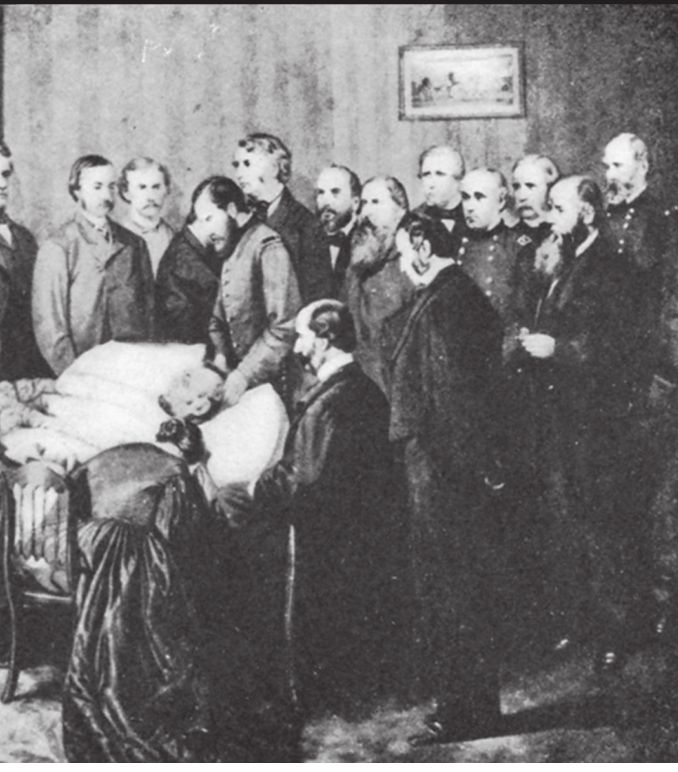

Health care, death and mourning in the 1800s
Historians, experts and enthusiasts gathered on April 15, the 150 th anniversary of Lincoln’s death, to discuss his assassination, his health care and mourning a president.
Wayne C. Temple, deputy director of the Illinois State Archives, spoke at length about the three men who served as physicians to Lincoln and the presidential family.
Temple tends to talk about the characters in the historical drama in the present tense, as if they are still around and he’s watching them in action.
“He’s only been commissioned for seven days, when suddenly he’s in the theater box attending to Lincoln,” Temple said of Charles Augustus Leale, the first doctor in the theater box the night Lincoln was shot.
All of the doctors to the first family had interesting stories, Temple said. He called Robert King Stone an ironic choice because he was an eye doctor, a Confederate sympathizer and thought Mrs. Lincoln was the devil.
A recent discovery in the archives was John Richards, who was doctor to the Lincoln family at the start of the Civil War. When the war broke out he went to the South to retrieve his son and was accused of being a Union spy when they found out he was Lincoln’s personal physician. The suspicions were dismissed by a general in the field and he was allowed to go.
Jason Emerson, journalist, historian and author of a number of books on Lincoln’s family including The Madness of Mary Lincoln, talked about the Lincolns’ personal experiences with death, both before and after Abraham Lincoln’s assassination.
He
spent some time talking about how Lincoln’s family was affected by the
assassination. He noted particularly what he found to be a common
denominator when it came to other writings about Lincoln: most of them
tend to end with his assassination.
“He dies and his story ends,” Emerson said. “But it didn’t end; he had a wife and two children.”
Emerson
discussed Mary Todd Lincoln and Robert, Mary’s and Abraham’s oldest
son. Robert handled the funeral arrangements because his mother was too
distraught to do so. Mary fought with the city council in Springfield
over where her husband was going to be buried after they had started
making plans for the funeral without consulting her. He said 10 years
after the assassination, when newspapers started bringing it up again,
it may have caused her post-traumatic stress, landing her in a mental
institution.
He said
Abraham Lincoln’s death had a profound effect on Robert Lincoln, and his
friends thought he seemed like a different person afterward.
Before
the assassination, “he was hilarious, he told great jokes, he was the
best storyteller they had ever known, just like his father,” Emerson
said. “After his father died, you didn’t really hear that too much
anymore.”
Robert and
Mary had different ways of grieving for their lost patriarch. But just
as different were the mourning customs in the 1800s compared to today.
Susan
Matt, chair of history at Weber State University in Utah, calls herself
a historian of emotions. She explained that mourning as it was done in
the 19th century was a much more open and public experience than the
solitary type of grieving most people do today.
She
showed an old newspaper ad for “mourning goods,” which largely
consisted of black clothing to be worn during a mourning period, and
sketches of the scene of someone’s death that people would often keep as
a remembrance.
“A lot
of it is going to seem somewhat excessive to modern eyes, and somewhat
ghoulish,” Matt said. “But to those living through the death, the
funeral and the aftermath, the often over-the-top expressions of grief
brought solace and comfort.”
Contact Alan Kozeluh at [email protected].